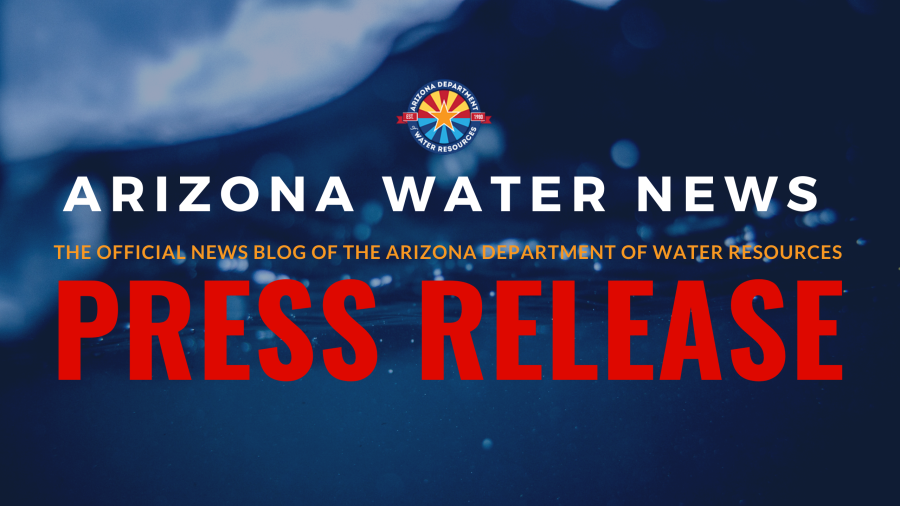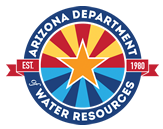
PRESS RELEASE
FOR IMMEDIATE RELEASE OCTOBER 19, 2023
ARIZONA
Doug MacEachern
Arizona Department of Water Resources
602-510-0104
dmaceachern@azwater.gov
CALIFORNIA
Jessica Neuwerth
Colorado River Board of California
818-254-3202
jneuwerth@crb.ca.gov
NEVADA
Bronson Mack
Southern Nevada Water Authority
702-822-8543
bronson.mack@snwa.com
Arizona, California and Nevada commit to record-setting conservation
to protect the Colorado River
Record-setting volumes of Colorado River water are being saved in Lake Mead
The Bureau of Reclamation is moving the process forward to develop new operating guidelines for the Colorado River that will be in effect after 2026. Simultaneously, states, tribes and water users across the Colorado River Basin continue to collaborate on a long-term sustainable plan for the stability of the river.
To that end, the Lower Colorado River Basin states – water users in Arizona, California and Nevada – are contributing record volumes of water to Lake Mead. By the end of 2023, cumulatively, the Lower Basin will have voluntarily conserved more than 1 million acre-feet – water that is being held back in Lake Mead for the benefit of the entire system over and above shortage reductions agreed to in 2007 and those of the 2019 Drought Contingency Plan.
In 2023, consumptive use in the Lower Basin States is expected to be around 5.8 million acre-feet, the lowest consumptive use since 1984.
Arizona
Arizona users are conserving nearly 345,000 acre-feet of water in 2023 through the Central Arizona Water Conservation District/Arizona Department of Water Resources ICS Preservation program as well as federally funded CAP subcontractor, tribal contractor and on-river conservation agreements. This is in addition to the 592,000 acre-foot Tier 2a shortage reduction taken by Arizona.
“Arizona is conserving more water than ever to stabilize the Colorado River Basin and protect our collective water future,” said Tom Buschatzke, Director of the Arizona Department of Water Resources.
“The commitment of our state’s tribes, cities, industries and agricultural districts to Colorado River conservation efforts is substantial, and builds upon Arizona’s long history of water conservation in support of a robust economy. I’m confident we will continue this tradition well into the future as we all adapt to a changing Colorado River.”
California
Colorado River water deliveries to California in 2023 are on track to be the lowest since 1949 – 700,000 acre-feet lower than the state’s 4.4 million acre-foot apportionment. In urban Southern California, Colorado River use this year is projected to be the third lowest in 60 years, thanks in part to recent broad efforts to reduce outdoor water use on grass. Last week, Gov. Gavin Newsom signed legislation prohibiting the use of potable water to irrigate grass that serves no functional purpose at businesses and other institutions.
“Twenty years ago this year, California permanently reduced its Colorado River water use by 800,000 acre-feet overnight — enough to serve 2.4 million households every year. This year, in addition to that unparalleled and ongoing effort, we’ve cut our use even further thanks to investments in conservation and partnerships forged between our agricultural, urban, and tribal water users,” said JB Hamby, California’s Colorado River Commissioner and Chairman of the Colorado River Board of California. “California is committed to leading with our water users, Basin States, and Basin Tribes to ensure sustainability on the Colorado River now and into the future.”
Nevada
Nevada implemented a series of new water efficiency measures to further enhance the community’s progressive and comprehensive conservation program, which has reduced Nevada’s consumption of Colorado River by 41 percent since 2002. The new water efficiency measures include pool size limits, state laws requiring decorative grass replacement, prohibitions on new evaporative cooling, and innovative tools to align economic development opportunities with water efficiency.
“With a population of 2.3 million residents, Southern Nevada will use less than 200,000 acre-feet this year – our lowest annual water use since 1993 when our population was about 900,000 people,” said John Entsminger, SNWA General Manager. “As a river community, we can all maintain diverse, robust economies while using less water, and the reductions in municipal and agricultural water use across the Lower Basin demonstrates that.”
Arizona, California, and Nevada water users continue to conserve and leave roughly 3 million acre-feet of water in Lake Mead by the end of 2026, ensuring Colorado River system stability. Collectively, ongoing commitments may exceed the volumes in the Lower Basin consensus proposal offered to the federal government earlier this year as part of the Supplemental Environmental Impact Statement process to revise the 2007 Interim Guidelines that operate the Colorado River system.
These contributions provide much-needed stability through 2026 while new operating guidelines are being developed for the Colorado River system.
###













